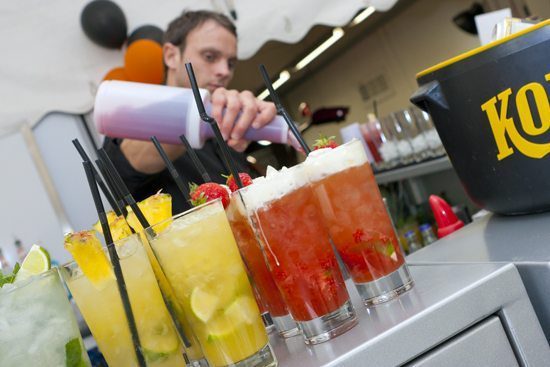[dropcap style=”font-size:100px; color:#992211;”]W[/dropcap]e’re poisoning our tiny little minds with repeated images of alcohol consumption in feature films.
So prevalent is the product placement of the evil grog that, just seeing characters drinking leads to deeper emotional involvement with the film.
Pavlovian response. We just loves the booze.
A study of the effects of alcohol portrayals in movies has found that positive and negative portrayals of alcohol can contribute to viewers’ emotional involvement or “transportation,” attitude towards, and evaluation of the movie.
“Viewers are often not aware of alcohol portrayals in movies,” said Renske Koordeman, who wrote her dissertation on the topic while at Radboud University Nijmegen, and is the corresponding author for the study.
“Product placement is more subtle than general ads, occurring when a company pays movie makers to portray its brand in a movie. Strategies to embed advertisements in a movie context with appealing actors – and without viewers’ conscious processing of the intentions of the [quote]Exposure to alcohol portrayals in
the media – including movies, but also
advertisements and digital media such
as Facebook – can encourage drinking
in young people[/quote]message – might be even more powerful than general advertising strategies since the message is not perceived as advertising. In addition, people are probably more involved in a movie than in an advertisement break, which is often used to do something else.”
“Exposure to alcohol portrayals in the media – including movies, but also advertisements and digital media such as Facebook – can encourage drinking in young people. Since movie characters can be regarded as role models by young people, the manner in which these characters portray alcohol use in a movie might have an impact on the beliefs and attitudes toward alcohol use by youngsters themselves.”
Koordeman and her co-authors used a within-subjects design in which participants were exposed to eight different movie clips containing alcohol (positive or negative context), or no alcohol portrayals, in a controlled lab setting. A total of 159 college students (84 males, 75 females), 18 to 30 years of age, participated in the experiment. Transportation and attitude towards the movie were measured for each participant after each movie clip.
“This study provides initial evidence that alcohol and the way in which alcohol is portrayed in movies contributes to how people evaluate and become transported in movies,” said Koordeman. “Participants were more transported into and had a more positive attitude toward movie clips with alcohol portrayals compared to the same movie clips with no alcohol portrayals. 
In addition, participants were more transported into movie clips with negative alcohol portrayals compared to clips with positive alcohol portrayals. However, participants endorsed more positive attitudes toward clips with positive alcohol portrayals compared to clips with negative alcohol portrayals.”
“Although the longer-term effects of alcohol portrayals in movies and ads have been examined, very few studies have tested experimentally the immediate causal and direct effects of on-screen alcohol portrayals on alcohol consumption or cognitions,” said Koordeman. “The current findings add to the literature by providing initial evidence that alcohol portrayals in movies and advertisements also immediately affect cognitions of young people.”
Kleinjan added that previous research has found linkages between movie exposure to tobacco and alcohol and actual consumption. “However, stronger restrictions have been placed on marketing tobacco and on the public display of cigarette images,” she said. “This is less the case for alcohol use; alcohol use/portrayal is allowed to be more self-regulated by the industry.
Source: Alcoholism: Clinical & Experimental Research
Photo: Carl Byron Batson. Not to be reproduced without prior permission.

Some of the news that we find inspiring, diverting, wrong or so very right.





















